Say it with tax this Valentine’s Day
February is the month of romance.
But forget Valentine’s Day flowers and chocolates, there are plenty of ways the tax system will bring you and your loved one closer together throughout the year.
Find out how you and your partner can benefit from the tax system.
The Marriage Allowance
Everyone gets a tax allowance before they start owing money to HM Revenue and Customs (HMRC) for any income or capital gains.
But if you have a spouse earning below the tax threshold, currently £11,500 for the 2017/2018 tax year, they can effectively transfer £1,150 of their personal allowance to you.
This is called the Marriage Allowance and lets married couples and those in civil partnerships save up to £230 in the 2017/2018 tax year.
The recipient must also be a basic rate taxpayer, so can’t earn more than £45,000 currently, or £43,000 in Scotland. Couples need to apply for the Marriage Allowance online.
The extra allowance will be given either by changing each person’s tax code or through self- assessment. You can work out how much you could save using HMRC’s Marriage Allowance calculator.
This is different to the Married Couples Allowance, which applies where one partner was born before 6 April 1935 and lets you reduce your tax bill by between £326 and £844.50 a year.
HMRC practice and the law relating to taxation are complex and subject to individual circumstances and changes which cannot be foreseen.
Income tax and dividends
If you run your own business you want to maximize your profits so making a wife or husband a shareholder or director can help with tax planning. You can split income depending on your own personal allowances. You also each get a dividend allowance – worth £5,000 in the 2017/2018 tax year and then dropping to £2,000 in the 2018/19 tax year- before any tax is due.
Capital gains tax (CGT)
Husbands and wives can transfer or gift assets between eachother without any liability for CGT emerging. You can currently earn £11,300 from assets before having to pay capital gains tax.
With some careful tax planning you could reduce a CGT bill by transferring assets to your partner. Technically, if you are married this gives you a combined allowance of £22,600 before needing to pay anything when you sell an asset.
However, your spouse or civil partner may have to pay tax on any gain on an item they were gifted if they later sell the asset so it is important to record the value of items and seek financial advice.
Inheritance tax (IHT)
This is not so much of a romantic tax benefit but married couples can also save money when one passes away by leaving assets such as savings or property to each other tax-free. Everyone’s estate is given a threshold of £325,000 before IHT is due, known as the nil-rate band.
This means married couples can eventually pass on an estate to their heirs such as children worth £650,000.
There is also now a separate residence nil rate band that provides a separate IHT threshold for property. It is currently worth £100,000 and due to reach £175,000 from April 2020.
This means in the 2017/2018 tax year, an individual’s estate could be worth £500,000 and a married couples assets could be worth £1m combined before IHT is due.
Pensions and Isas
If you and your partner reached state pension age before April 6 2016, in some circumstances basic state pension entitlement can be passed either in part or in full on to the surviving spouse when the other passes away.
Similarly, when a husband or wife dies, their Isa allowance remains in the tax-free wrapper and the surviving spouse receives an ‘additional permitted subscription’ allowance (APS) equivalent to the amount held in the tax wrapper at the point of death. The APS is separate to your own ISA allowance.
An APS made in cash can be used over three years, while those in stock must be completed within 180 days of the distribution of the assets to the surviving spouse.

